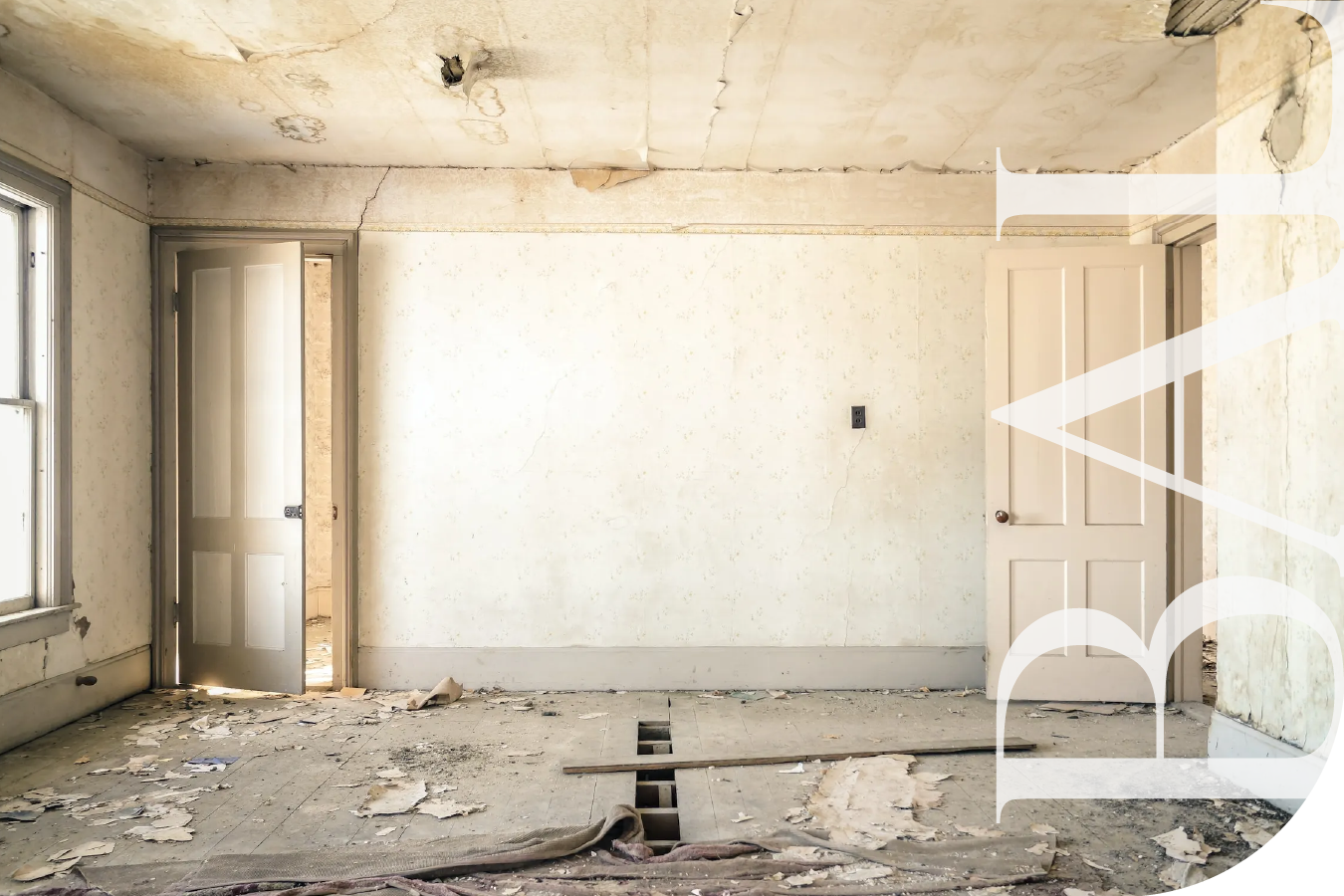
I. In General
In the second paragraph of the first paragraph of Article 350 of the Turkish Code of Obligations, it is regulated as follows: “If substantial repairs, expansion, or alteration of the leased property is necessary for its reconstruction or construction, and the use of the leased property is impossible during these works, the lease may be terminated by a lawsuit filed within one month from the date determined in accordance with the termination period and notice periods for leases under general provisions relating to leases, at the end of the term in fixed-term contracts and after the renewal date in indefinite-term contracts.” Reconstruction and construction are regulated as grounds for eviction.
After the renewal date of your lease agreement, if it becomes necessary for you to carry out reconstruction, mandatory repairs, or renovations, you can initiate an eviction lawsuit within one month by first applying to a mediator. Both the landlord and the non-landlord owner can file this lawsuit. However, not every repair and renovation requires the eviction of the tenant. Certain conditions must be met for the lawsuit to be accepted. In this text, we will focus on mandatory repairs and renovations rather than reconstruction.
II. Conditions for Filing an Eviction Lawsuit Due to Mandatory Repairs and Renovations
1. Conducting Repairs, Expansion, and Alterations
Firstly, you must have the intention to carry out repairs, expansion, or alterations in your apartment to initiate the eviction lawsuit. Repair involves the improvement of parts that have deteriorated over time or due to other interventions in the structure. Strengthening columns damaged due to an earthquake is an example of repair.
Expansion refers to increasing the usable space of the building, such as adding a new room, a new floor section, or altering internal or external walls by removing some or changing their positions. Alteration involves changes in the way the building is used, such as merging two apartments vertically or installing an elevator. The reason for the lawsuit must be clearly stated in the petition, specifying the basis for the action.
2. Having an Urban Planning Purpose
Repairs, expansions, or alterations must have an urban planning purpose. Urban planning purpose involves improvement work, elimination of deteriorated conditions compared to the previous state of the property, beautification, and the goal of bringing it to a better position in terms of use. Eviction decisions are not made for repairs, expansions, or alterations that do not have an urban planning purpose.
For example:
- Renovating floors in a dilapidated building to install a heating system,
- Installing an elevator or bathrooms in rooms,
- Strengthening columns and walls based on the Earthquake Regulation for the leased property.
Presence of an urban planning purpose is acknowledged in these examples. On the other hand, changes and renovations without an urban planning purpose, such as removing a partition wall between the leased property and adjacent shops, may not be grounds for eviction. The existence of an urban planning purpose will be determined through a site inspection and expert report.
3. Being Substantial
The changes and renovations made must also be substantial and significant. Minor alterations in the leased property are not considered substantial. If it is not possible to reside in the building during repairs, expansions, or alterations, it is presumed as substantial based on the circumstance. The determination of whether the change is substantial is also made by experts.
Not every repair, expansion, or alteration activity will be the subject of an eviction lawsuit. However, it is not necessary for the procedures to be a mandatory change. The key factors are whether the change is substantial and whether it serves an urban planning purpose.
The Court of Cassation has ruled that eviction decisions should be made in cases where the landlord carries out substantial and urban planning-oriented repairs and renovations with the aim of increasing their income. The Court of Cassation has also decided that if the leased property, rented as a residence, is converted by the landlord into a commercial property and operated by the landlord, an eviction decision may be issued.
Painting, plastering, and parquet flooring in the leased property are not considered substantial. On the other hand, adding a floor to the building or conducting significant and aesthetic restoration works is deemed substantial.
4. Impossibility of Tenant Occupancy
For an eviction decision to be issued, it should not be possible to use the property during repairs and renovations. Otherwise, an eviction decision will not be granted. According to the Court of Cassation, if it is determined by experts that being inside the building during repairs would pose a seventy-five percent danger, an eviction decision should be made.
During construction work, it should be impossible to reside in the leased property or, in the case of a commercial property, use the property. Whether it is possible to reside in the leased property is also examined by experts.
5. Provision of the Project to the Court
The project for the intended changes, repairs, and renovations must be submitted to the court. The court should be presented with the project approved by the municipality for construction. Experts will examine the project both on paper and on-site to determine whether the implementation of the project is legally possible.
It is not necessary for the project to be approved when filing the lawsuit, but its submission becomes mandatory during the trial process. If an application for project approval has been made to the relevant municipality but no response has been received yet, the court may wait for the response. The court may grant the plaintiff a specific period for this purpose. However, if the plaintiff has not applied to the municipality, the court may dismiss the case, especially if multiple definite periods have been given.
If the leased property is a historical monument, obtaining necessary approvals from the Regional Board for the Protection of Cultural Assets is required for any renovation work.
The expert will determine whether the project complies with the law. Additionally, the expert should establish whether the approved project is specifically for the leased property. However, the expert is not expected to make judgments beyond their authority, such as determining the correctness or incorrectness of the project in terms of construction techniques.
III. Rental Prohibition
In the second and third paragraphs of Article 355 of the Turkish Code of Obligations, it is stated: “Real estates vacated for reconstruction and urban development purposes cannot be leased to others without a justifiable reason for three years from the time they are vacated in their old state. The previous tenant has the priority right to lease the real estate in its new condition and with the new rental fee after the reconstruction and development. This right must be exercised within one month following the written notification by the landlord; as long as this priority right is not terminated, the real estate cannot be leased to others before three years have passed. If the landlord acts contrary to these provisions, they are obliged to pay compensation to the former tenant, not less than the annual rental fee paid in the last rental year.”
Firstly, if the landlord fails to carry out the reconstruction or urban development after vacating the property for such reasons, it is prohibited to lease the property for three years. A prohibition on re-leasing is stipulated if the claimed eviction reason is not fulfilled.
Secondly, in a property vacated for reconstruction or urban development, the landlord must offer the property to the tenant after making the necessary renovations before leasing it to someone else. It is prohibited to lease the property to another person within three years without making an offer to the tenant. However, there is no prohibition on the landlord using the property for their own purposes.
After the tenant is evicted and the urban development activities are completed, the landlord must notify the tenant, inquiring whether they want to lease the property in its new condition and with a new rental fee. If the tenant does not respond positively within one month, they will lose the right to lease. In this case, the landlord can lease the property to someone else.
The landlord should not offer an excessively high rental amount as the new rental fee to the tenant. If the landlord offers a significantly higher amount than the fair rental value and, as a result, the tenant cannot exercise their priority right, the prohibition on re-leasing is considered violated. The Court of Cassation has ruled that the new rental amount should be reasonable and fair, taking comparable properties into account.
If the landlord violates the prohibition on re-leasing, they are required to pay the tenant a compensation equivalent to one year’s rental fee. The prohibition on re-leasing does not grant the tenant the right to force the landlord to enter into a contract or to determine the rental fee through legal action.
Ece Deniz Vardar
Lawyer / Attorney in Turkey
Landlord Tenants Attorneys in Turkey
Call Us : +90 212 909 86 34
Sen Mail : info@ballawyer.com
